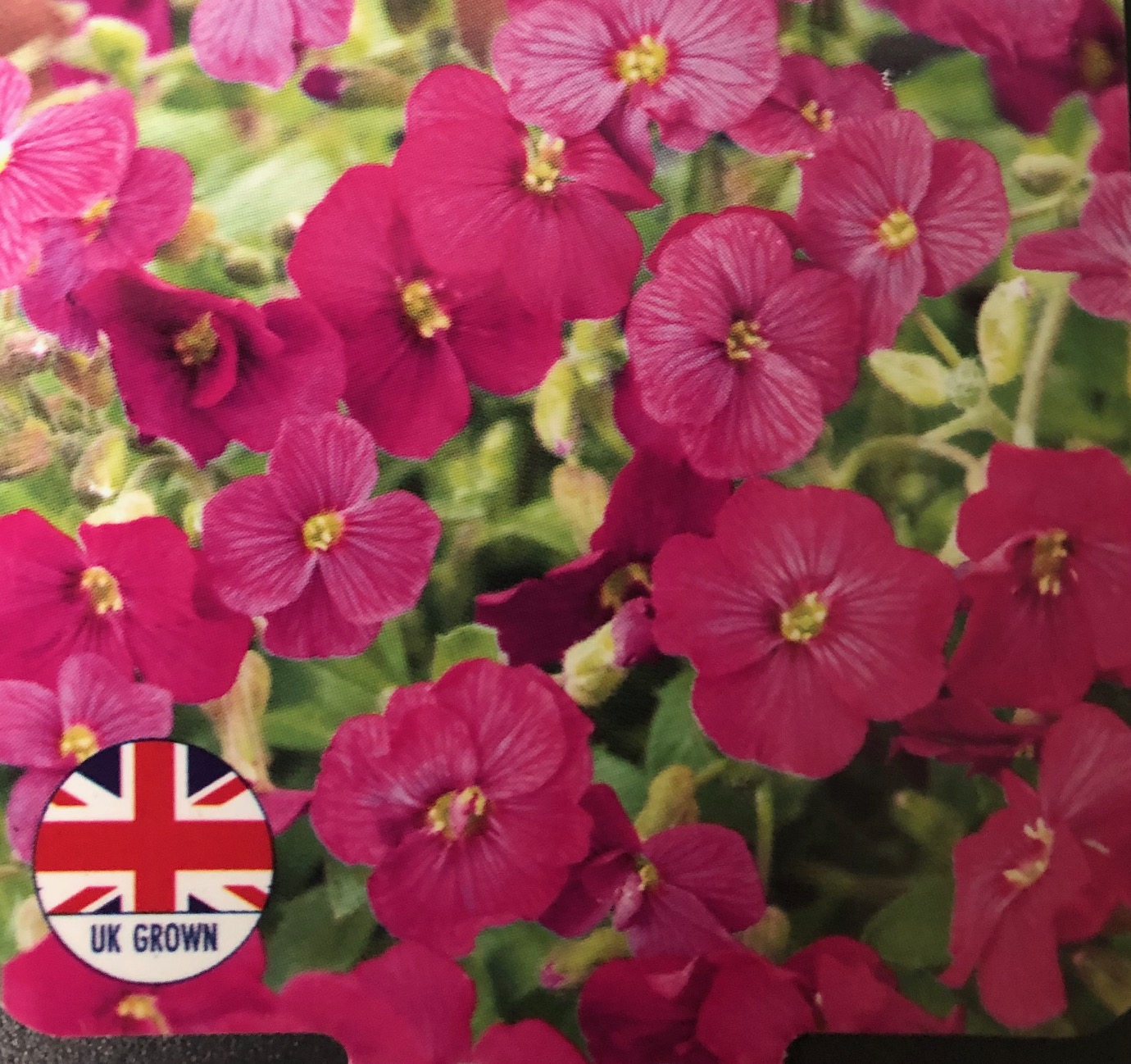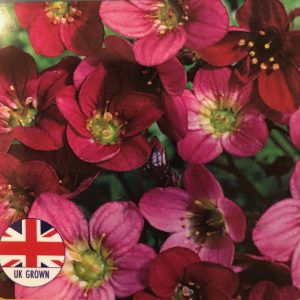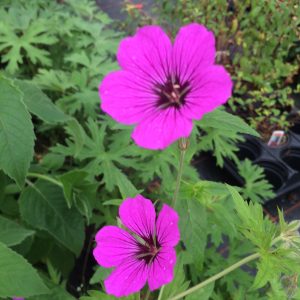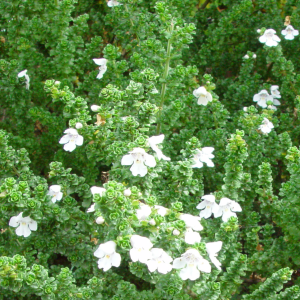Aubrieta Regado Red
Aubrieta Regado Red is an easy to grow alpine with spreading grey green mats of small leaves. The mounds smothered profusely in masses of small red flowers.
Aubrieta Regado Redis lovely cascading down over a wall, or near the front of borders. Flowers March to May.Max Height 10cm. Max Spread 30cm. Full sun. Hardy.
MORE
Aubretia is a genus of flowering plants in the family Brassicaceae, commonly known as rock cress or false rock cress. There are about a dozen species of Aubretia, all of which are native to Europe and Asia. These plants are popular in rock gardens, wall crevices, and other areas where their low-growing habit and colorful blooms can be appreciated.
Aubretia plants typically bloom in early spring, producing masses of small, four-petaled flowers that range in color from pink to purple to blue. The flowers are borne on short stems that rise above the foliage, and they are quite showy when viewed up close. In some cultivars, the flowers may also have a white or yellow eye that contrasts with the main petal color.
One of the advantages of growing Aubretia is its adaptability to a range of growing conditions. These plants prefer well-draining soil and full sun, but they can tolerate some shade and a range of soil types. In fact, Aubretia plants are often used to stabilize soil on slopes and other areas prone to erosion.
Aubretia is also a relatively low-maintenance plant. Once established, it requires little in the way of watering or fertilization, and it can tolerate periods of drought. However, pruning may be necessary to keep the plants from becoming too woody or sprawling. In addition, Aubretia can be susceptible to certain pests and diseases, such as aphids and clubroot, so it’s important to monitor the plants regularly for signs of infestation.
One of the most appealing aspects of Aubretia is its versatility in garden design. Because it is a low-growing plant, it is ideal for rock gardens, where it can be used to soften the edges of rocks and boulders. Aubretia also works well in wall crevices, where its roots can take hold and help to stabilize the structure. In addition, it can be used to edge garden beds, where its colorful blooms and evergreen foliage provide year-round interest.
Aubretia can also be grown in containers, where it can be used as a trailing plant to spill over the edges of pots and window boxes. Because it is a hardy plant, it can be left outside in containers year-round in many climates.
When it comes to companion planting, Aubretia is a versatile plant that can be combined with a wide range of other species. It looks particularly striking when paired with other rock garden plants, such as saxifrages and creeping phlox. In addition, it can be combined with spring bulbs, such as tulips and daffodils, for a colorful early-season display.
In terms of propagation, Aubretia can be easily grown from seed or propagated through cuttings. Seeds can be sown in the spring or fall, and they should be kept moist until germination occurs. Cuttings can be taken in the summer, and they should be rooted in a well-draining medium before being transplanted.
In conclusion, Aubretia is a versatile and attractive plant that is well-suited to a range of garden settings. Its low-growing habit, colorful blooms, and adaptability to a range of growing conditions make it a popular choice for rock gardens, wall crevices, and other areas where its unique qualities can be appreciated. With a little care and attention, Aubretia can provide years of beauty






Reviews
There are no reviews yet.